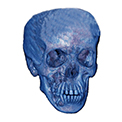Group headed by H. Tenenbaum
Periodontal diseases are inflammatory diseases initiated by anaerobic bacteria such as Porphyromonas gingivalis (Pg), affecting tissues surrounding teeth such as connective tissues and alveolar bone and can ultimately result in the loss of the tooth. The destructive process in periodontitis is a consequence of an imbalance of the homeostasis between degradative enzymes such as MMPs and their inhibitors, the Tissue Inhibitors of Metalloproteinases (TIMPs). This imbalance can also take place with other types of degradative enzymes, such as cathepsins. Interestingly, periodontal diseases could influence numerous systemic diseases including atherosclerosis via the increase of circulating pro-inflammatory cytokines, such as IL-1β and repeated bacteraemia.
We have recently demonstrated that :
– cells react differently when stimulated by Pg-LPS, epithelial cells through TLR-2 and endothelial cells through TLR-4
– Pg infection and Pg-LPS stimulation of endothelial cells increase cathepsinB activity
– human endothelial cells infected with Pg or stimulated by Pg-LPS react through the induction of the NLRP3 inflammasome in order to initiate a pro-inflammatory answer to eliminate the whole Pg or its purified LPS.
– local and systemic response to periodontal inflammation could also be demonstrated via experimental periodontitis induced in mice




Commentaires récents